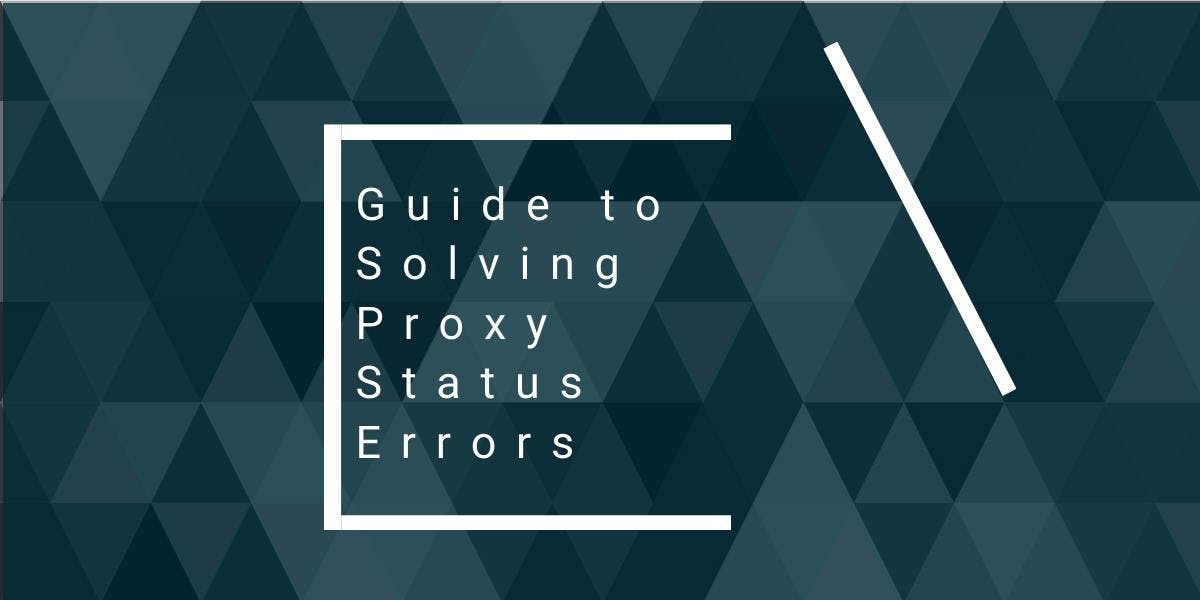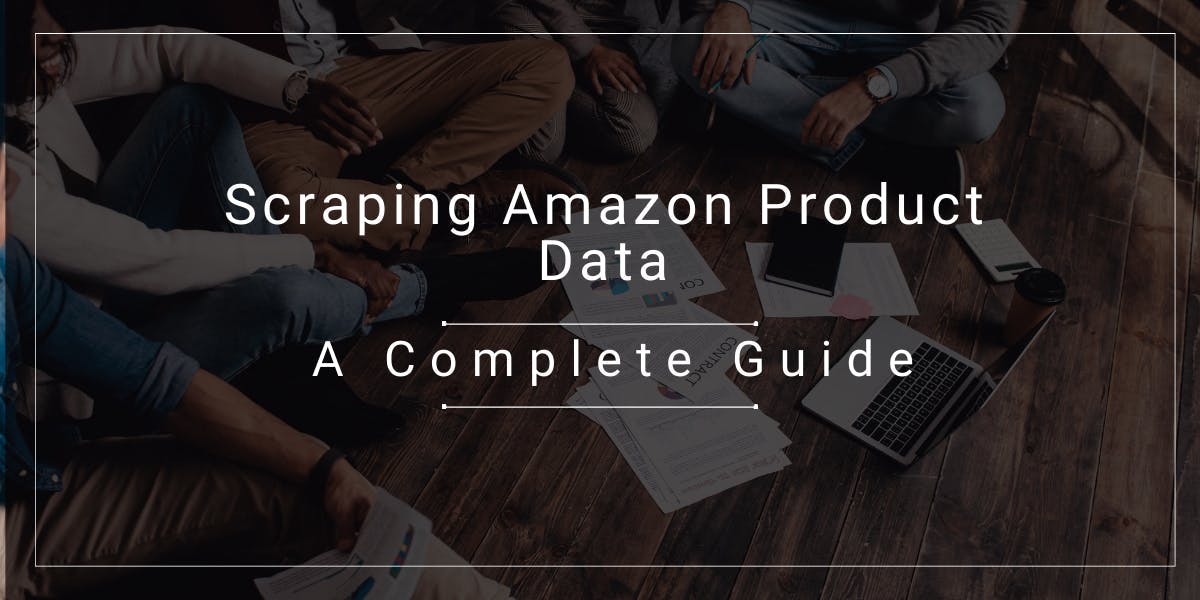Guide to Solving Proxy Status Errors
Flipnode on May 09 2023

Have you encountered the need to temporarily halt your web scraping processes due to frequent proxy error codes? This issue is prevalent, particularly for those who are new to using proxies for web scraping. With a plethora of status codes, each with its unique implications and resolutions, it can be challenging to navigate through the maze of errors.
To address this problem, this article will outline the solutions for proxy server errors and discuss the most typical errors. By familiarizing yourself with proxy status errors and their corresponding solutions, you can efficiently complete your web scraping tasks and manage proxy server IPs with ease.
What is a proxy error?
In summary, a proxy server error is an HTTP error status that arises when a request sent to a web server through a proxy server fails. The specific code associated with the error typically indicates the nature of the proxy problem encountered. With a multitude of codes to navigate, proxy errors can be perplexing. Depending on the error code, it is necessary to devise a solution to resolve it.
HTTP response status codes are grouped into five official classes, with the first digit of the code indicating the response category.
The status codes in the 1xx and 2xx classes are used to provide information and generally do not necessitate any action. On the other hand, the 3xx, 4xx, and 5xx codes indicate a problem that requires attention and additional steps to be taken.
It's important to mention that in this article, we will only discuss the standard proxy status codes that are commonly used by most proxy server providers and websites. However, there may be instances where the same status codes are used for different purposes.
100 - Continue
Typically, the 1xx status codes are employed when a server is in the process of handling a request, but they are infrequently encountered. The 100 error code indicates that the server has received the request header and is ready to receive the request body.
101 - Switching protocols
Encountering a 101 status code indicates that the client's browser is seeking to modify the communication protocol mid-transmission. This code confirms that the server has agreed to the request and is transmitting a notification of acknowledgment.
102 - Processing (WebDav)
When a client sends complex requests with multiple requirements, the target server may take some time to process the request. To prevent a timeout error on the client's side, the server notifies the client that the request has been received and is being processed.
103 - Early hints
When the server is in the process of sending a response to the client and needs to include some extra header fields, it might return a 103 status code. This code informs the client that the server will soon send the final response with all the necessary header fields included.
301 - Moved Permanently
If a permanent redirect is set for an original URL, you'll get a 301 error. This redirects the user agent to a different URL. In most cases, this type of minor proxy error is not problematic, as many scrapers and browsers will follow the new URL.
305 - Use Proxy
The occurrence of a 305 error code indicates that the web server you are trying to access can only be reached via a proxy. However, this code is no longer in use as it poses security risks, and hence it is unlikely that you will encounter this error.
To resolve this error, you should connect to a proxy server and retry the request.
306 - Switch Proxy
The 306 error code signifies that an HTTP client is using a proxy server, but it needs to connect via a different one. However, this error code is quite uncommon in modern times.
To resolve this issue, you need to connect through a different proxy server.
307 - Temporary Redirect
If you encounter the 307 proxy error code, it indicates that you will be redirected to a different location temporarily to access the resource.
To resolve the issue, you should follow the redirect link and resubmit the request.
400 - Bad Request
The 400 error code is frequently encountered and indicates that either the target server or the proxy server is unable to process the request sent. This error can be caused by various factors such as incorrect formatting, improper routing of the request, or faulty syntax.
To fix this error, the first step is to thoroughly check the request to ensure that all the necessary information is included. If the request is correct, attempting to resend it may help resolve the issue.
401 - Unauthorized
If you come across a 401 proxy error code, it indicates that the resource you are attempting to access requires authentication. To resolve the issue, you can provide the necessary authorization details. However, it's important to note that scraping data that is hidden behind authentication requirements may be illegal or unethical.
How to fix: Provide the required authorization information.
403 - Forbidden
The 403 error message is a general response indicating that access is forbidden for some reason, without specifying the exact cause. It can indicate that the user doesn't have the necessary permissions or has used incorrect login credentials. In some cases, this error may occur if the user is attempting to perform an action that only site administrators are authorized to do.
404 - Not Found
A 404 error code is returned by proxies when the online resource you requested is no longer available. This error code indicates that the URL may be incorrect, has been changed without redirection, or simply does not exist anymore.
To fix this error, you should double-check the URL and try again.
407 - Proxy Authentication Required
The 407 status code error occurs when authentication is required for accessing the requested online resource. This happens when the scraping tool used is not properly authenticated with the proxy server provider, or when incorrect login credentials are provided. Another reason for this error could be not whitelisting the IP addresses in the proxy server settings.
To fix this error, you need to update your proxy server settings by including the whitelisted IPs and providing the appropriate credentials. Additionally, make sure that all the required information is included in the request. If you are unable to resolve these proxy issues, contact your proxy server provider for assistance.
408 - Request Timeout
The 408 error code indicates that the server has timed out while waiting for a request from the client. Slow or failed internet connectivity could be one of the reasons for this error.
To resolve this issue, you should ensure that your internet connection is stable and then retry sending the request. If the error persists, you can check the server load to see if it's handling too many requests or if there's a problem with the server itself.
429 - Too Many Requests
If a client sends an excessive number of requests within a specific time frame, using the same IP address, they may encounter a 429 proxy error. This may cause the web server to perceive the client as a bot and restrict access.
In some cases, proxy providers may use the 429 status code to limit the customer's rate before they reach the web server. This may be determined by the proxy provider's terms and conditions.
To resolve this proxy error, the client should rotate their IP address and set appropriate time delays between requests.
502 - Bad Gateway
The most common cause of this error is when the server acting as a proxy or gateway receives an invalid response from another server.
How to resolve: If you come across this error, try clearing your cache and cookies. If that doesn't work, the next step is to change your DNS settings and attempt the request without using a proxy server.
503 - Services Unavailable
The 503 status code error is typically displayed when the server you are trying to access is unavailable. This can occur because the server is overwhelmed with requests or is undergoing scheduled maintenance.
Another reason for this error is that your proxy IP address has been identified and blocked by the website. If that's the case, switching to a different proxy server can help. Alternatively, rotating your IP address can prevent future blocks.
To fix this error, try changing your proxy server or rotating your IP address.
Conclusion
Encountering proxy status error codes can be a frustrating hindrance when trying to access desired data. However, most of these errors can be resolved easily by understanding their meanings and following basic steps.
If you found this guide helpful, you might also find this article on extracting data from a website useful.



